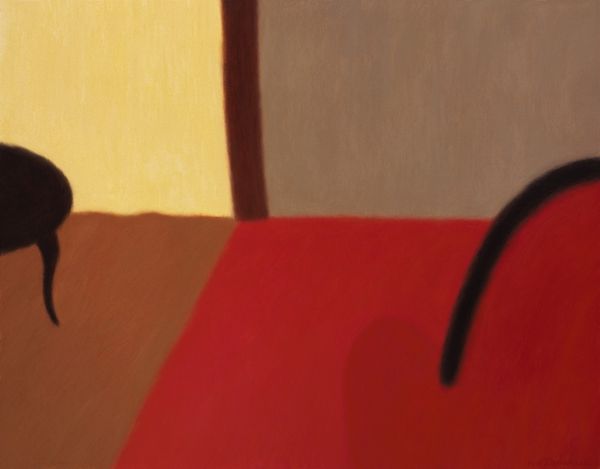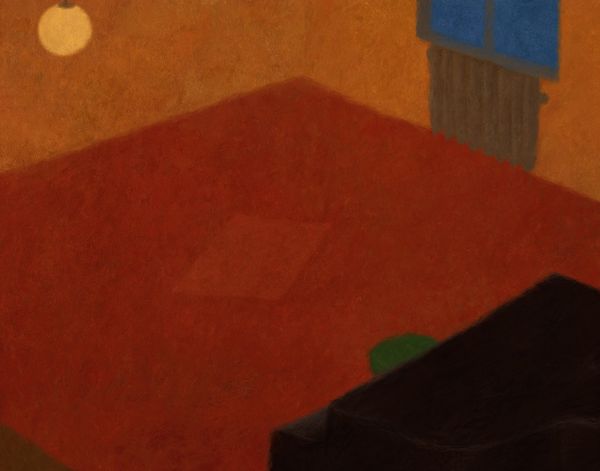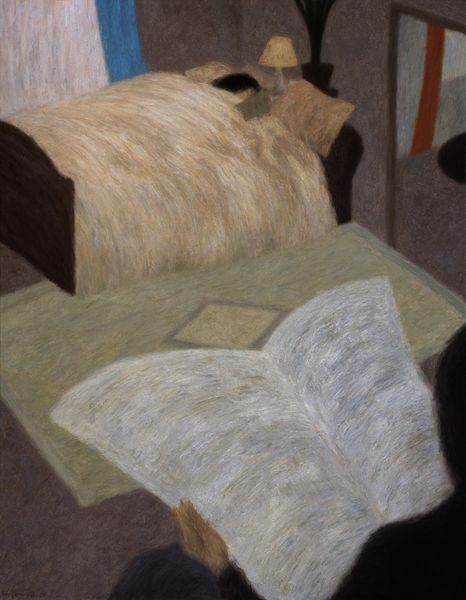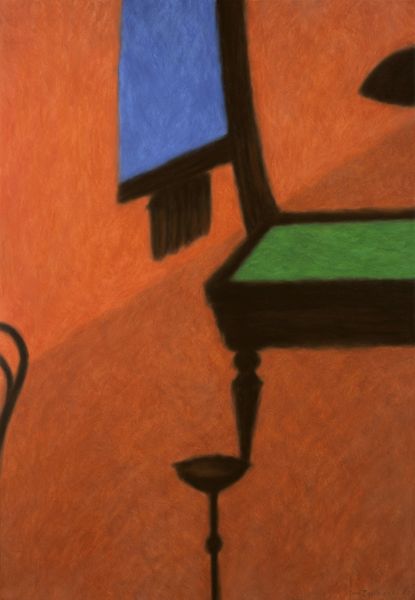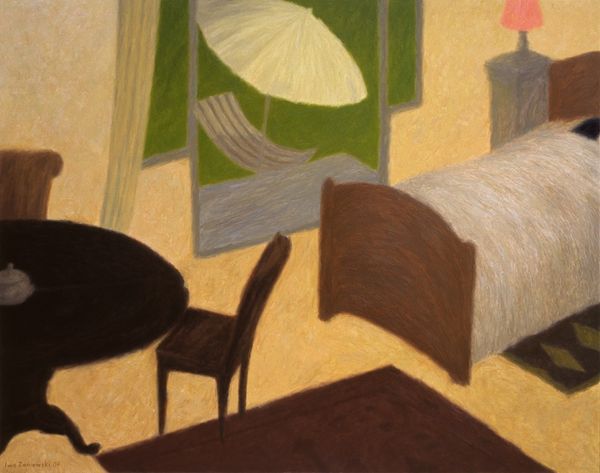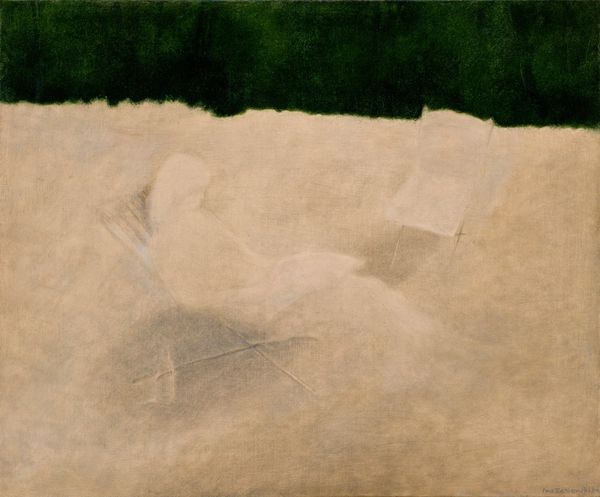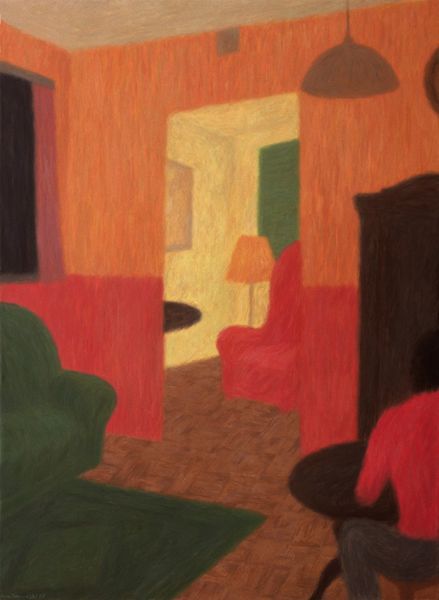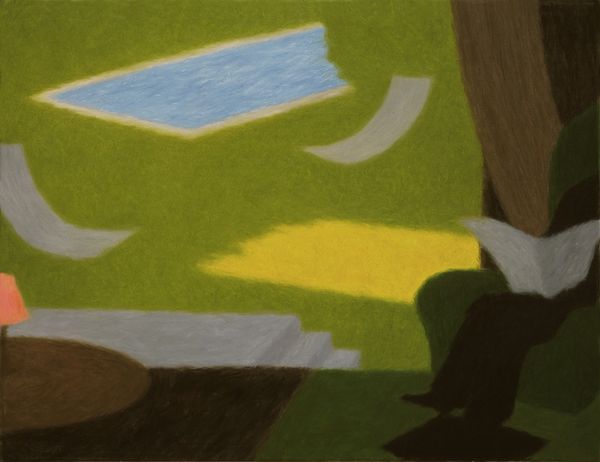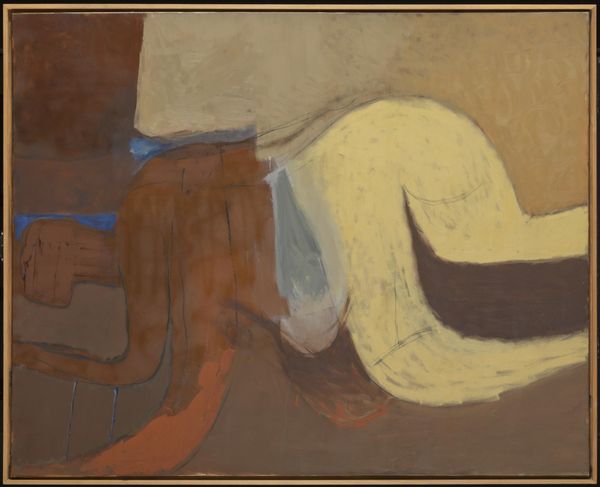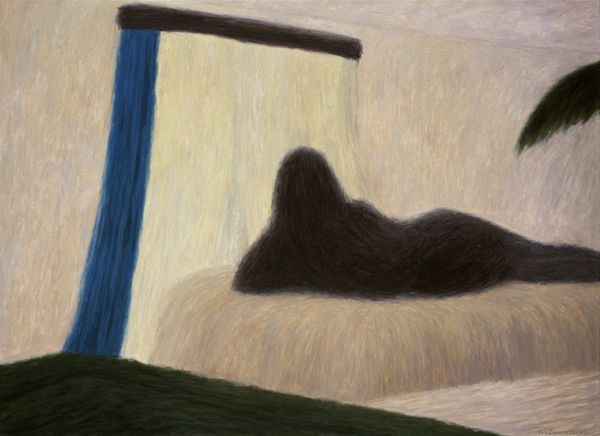
painting, oil-paint
#
abstract painting
#
painting
#
oil-paint
#
oil painting
#
expressionism
#
abstraction
#
expressionist
Copyright: Modern Artists: Artvee
Curator: Welcome. Before us, we have Iwo Zaniewski's intriguing oil painting, "Armchair and Rug." Editor: Intriguing is one word for it. It evokes a feeling of unsettling domesticity. That saturated green flattens everything; there’s an almost claustrophobic stillness to the scene. Curator: Indeed. Note how Zaniewski deploys colour, creating flattened, ambiguous forms. The chair and rug seemingly merge, their definition lost in a sea of that dominant verdant hue. This ambiguity undermines any stable interpretation of the depicted space. It asks if our perceptions of 'interiority' are more fluid, less fixed, than we allow. Editor: I wonder, does this image comment on postwar Polish design and consumption? Armchairs and rugs—signifiers of middle-class comfort— are presented here drained of joy, perhaps suggesting the spiritual hollowness of materialism within the Polish cultural context? It feels like a stark representation of a private life under scrutiny. Curator: An intriguing lens through which to see it. Looking at the composition purely formally, we observe that Zaniewski positions the scene to force our gaze toward surface rather than depth. Notice how, despite the natural perspective inherent in portraying an armchair and rug, the image's visual depth feels stunted. Editor: The hazy treatment of light interests me too. It suggests a state of permanent unease or an unresolved dream, a persistent fog clinging to objects once meant for rest and relaxation. It speaks of historical burdens on the soul, perhaps the residual trauma felt after times of cultural suppression. Curator: I concede that that interpretation is viable, yet isn't there also an intentional breakdown of what the depicted objects mean, freeing them of any symbolic weight and creating instead visuality that seeks its justification, its logic, only within the picture's framework? A surface where paint and colour achieve autonomy? Editor: Perhaps both. Ultimately, the painting challenges us. Does it reflect a cultural and historical tension within the region and time? Or is its abstraction, and the visual language employed, a radical assertion of form and colour over meaning? Curator: Indeed, food for thought for those seeking meaning and understanding in art, and, by extension, the world. Editor: A compelling image indeed. It remains unsettlingly thought-provoking.
Comments
No comments
Be the first to comment and join the conversation on the ultimate creative platform.
